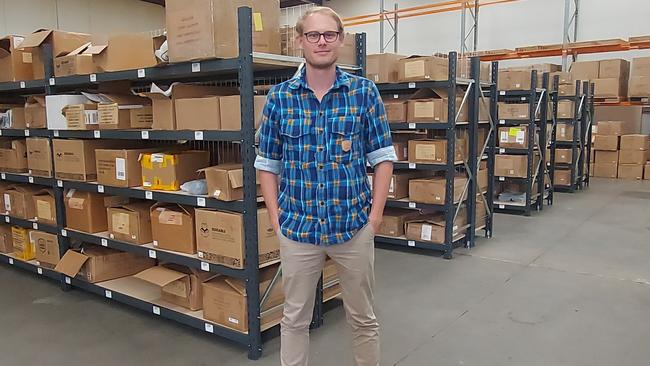Four-day week at full pay ‘inevitable’ in Australian workplaces, research shows
Most Australians expect a shorter work week to become a reality. See how to broach the subject with your boss, and keep your full pay.
Careers
Don't miss out on the headlines from Careers. Followed categories will be added to My News.
A shift to a shorter work week is inevitable, most Australians believe, with the number of job postings that mention a four-day week increasing by almost 50 per cent this year.
Research from recruiter Hays reveals more than three-quarters of Australians expect a four-day work week will become mainstream, with two in five workers believing it could be a reality within the next five years.
Just 23 per cent believe a four-day work week will never materialise, the research shows.
Early days
The concept of a shorter work week is attracting interest from both businesses and jobseekers, with the number of job postings that mention a four-day week increasing by almost 50 per cent earlier this year, compared to the relatively stable period from January 2018 to June 2021, says Indeed APAC economist Callam Pickering.
But Pickering says widespread adoption is still a way off, with just 0.5 per cent of Aussie job postings explicitly referencing a four-day week in their role description.
Less than 100th of 1 per cent of all job seekers last year specifically requested a four-day week – although that’s double what was recorded in 2019, he says.
“It’s still very early days and any shift towards a collective four-day week is still in its infancy,’’ Pickering says.
“But I do think there’s a certain inevitability about this for a lot of industries and occupations and … the data certainly suggests that many employers are changing their attitude towards working a full-time schedule versus a part-time schedule.’’

Making it happen
With surveys finding a shorter week helps workers to reduce stress, sleep better and maintain a healthier work-life balance, mental health and resilience expert Graeme Cowan believes more Aussies want to negotiate a four-day work week with their employer.
“When it comes to speaking to your manager about (implementing a four-day week), I would talk about it as an experiment rather than being permanent,’’ says Cowan, co-founder of R U OK? and WeCARE365.
“Just say, ‘Let’s try this for a month and see how it goes’. That’s a much lower risk for the employer to agree to.’’
Zac van Manen is marketing manager with workwear brand TradeMutt, which recently moved to a six-month trial of the four-day week, with workers retaining full pay.
He says the extra focus required to get his work done within a shorter time frame results in “maybe 10 per cent more stress (on the days spent at work) but that’s fully offset by the three-day weekend every week”.
van Manen believes TradeMutt will move to a permanent four-day arrangement after the trial ends, noting the company has so far continued to meet its sales targets.
“Having every Friday off means I can go to the doctor, I can go to the optometrist and I can go to the gym (without impacting work commitments). I can just sleep in if I want to,” he says.
“It’s going to be a really hard sell to go from doing four days a week back to five days – I would for the right (job) opportunity but I would really have to believe it would be worth it.”

Not for everyone
A senate inquiry recently urged the federal government to back a trial of the four-day week with no sacrifice in pay.
Meanwhile, in a landmark agreement, the Australian Services Union has announced Oxfam Australia will allow its full-time staff to work a 30-hour week for full pay – the first such arrangement formalised within an Enterprise Bargaining Agreement.
But Hays managing director Nick Deligiannis says most workers requesting a shorter week will likely face push-back from bosses concerned about making such a major change to their organisation.
He suggests bosses may be more agreeable to a trial for select employees rather than a company-wide rollout.
“When you present your case (to an employer for a four-day week) do it confidentially and professionally,” he says.
“Don’t try to start a mutiny. Use data and logical arguments and be respectful of your boss’s position and concerns.”
Deligiannis says many companies will be unable to support a four-day week at full pay and need people available five days to maintain adequate staff coverage.
“Healthcare, retail and service-based organisations come to mind (as opponents to a shorter week) as they need staff onsite more than four days,” he says.
“So be sensitive to the needs of your organisation.”
Career expert Nick Deligiannis shares his tips for requesting a four-day work week:
1. Consider the needs of your organisation. Healthcare, retail and service-based companies are unlikely to be able to facilitate a four-day week.
2. Research the benefits. Look for data from other companies that have trialled a four-day week to support your proposal.
3. Suggest an initial trial. Companies don’t launch immediately into a permanent four-day week. They start with a trial program, usually with only a few employees and for a set time frame, to test the model and measure results.
4. Address concerns. If your boss is worried about a one-day absence each week, could a rotating schedule work so someone is always present?
5. Keep your proposal confidential.
6. Be patient. It could take months before your boss decides to investigate a trial – if at all. Only a small handful of companies have adopted this model so far and widespread change takes time.




